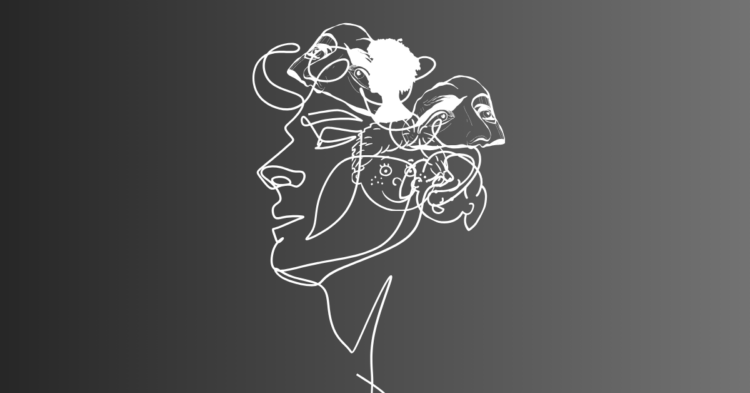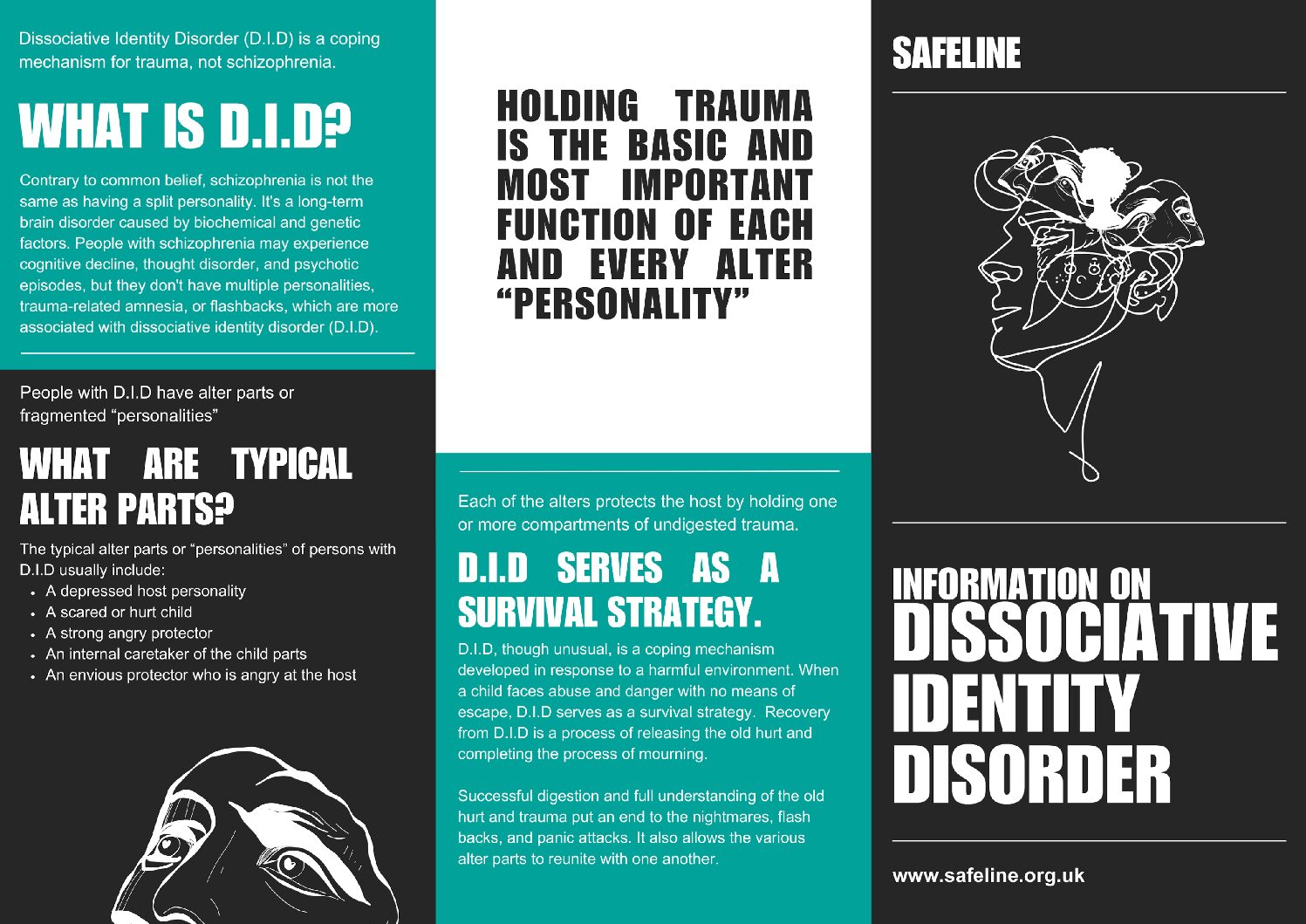The most common symptoms of DID are sudden mood swings, episodes of depression, lack of memory for much of childhood, periods of amnesia or time loss, headaches, nightmares, and hearing internal voices. Some people describe the internal voices as “thoughts” that the person does not believe that have come from him or her. Other symptoms may include flash backs, self-injury behaviours, shame, guilt, self-hatred, panic attacks, wanting to die, and “feeling crazy.” Some people with D.I.D have all of these symptoms and others have only some.
Because the symptoms of D.I.D “mimic” so many symptoms of other categories of mental health disorders, unless clinicians are sensitive to the possibility that this diagnosis may exist and
specifically assess for its presence, persons with D.I.D may stay in therapy for years and obtain
only minimal and/or periodic relief from these symptoms.
Statistics and ongoing research continue to conclude that medications do not work well for people with D.I.D. Results are often unpredictable, having little or no effect or unintended exaggerated effects, or medications may work in the beginning but soon cease having any therapeutic effect.
The symptoms of D.I.D wax and wane. A person with D.I.D may appear to be fine for years and then suddenly begin to have strong symptoms – usually due to flash backs of past trauma. Flash backs are not all visual but can be also strongly experienced as unexplained unsettling feelings and body sensations. Research suggests that persons who are eventually given the correct diagnosis of D.I.D have been given previously, on the average, a total of 5 or more other severe or chronic diagnoses. Included are Bipolar Disorder, Schizoaffective Disorder, Recurrent Psychotic Depression, and Schizophrenia. Notable is that normally effective psychotropic medications prescribed for these disorders do not work with D.I.D patients who have been incorrectly diagnosed.
People with D.I.D will continue to have D.I.D until successfully treated.



